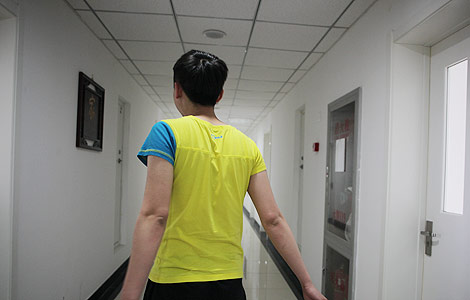Camera makers fight threat from smartphones
Updated: 2013-06-28 08:16
By He Wei in Shanghai (China Daily)
|
||||||||
It's sometimes fascinating to watch fading industries struggle to remain relevant. The quick rise of tablets eclipsed the development of desktops and laptops. And pocket cameras are now facing a similar scenario amid increasing smartphone sales.
These days, most phones sold in China have built-in cameras. People are buying fewer compact cameras, as phones are able to take pictures nearly as well and in a much more convenient way.
This has forced camera makers to load their products with glitzy new features, such as easy-sharing online systems and global positioning system tagging, in a fight for survival against mobile phones that let tech-savvy youngsters pose and click whenever they desire.
Compact camera manufacturers are rethinking their strategies to grab market share, as they are being severely hit by the double threat of handy smartphones and professional photographic devices, where bulky single-lens reflex, or SLR, cameras rule.
For instance, Japanese camera maker Casio Computer Co Ltd has recently launched its response to the smartphone threat.
Casio's EXTR lineup, with a definition up to 12 million pixels, has a built-in editing feature that allows users to fix any flaws instantly.
The gadget is designed to help users avoid getting caught on camera with wrinkles, improve their complexions and make people look better, according to the company's Chinese website.
With pink, red and white models available, the Casio camera is targeted at women and has functions such as a feature that allows users to make their complexions look lighter, which will likely be popular with Asian women, said Cao Zichen, a seasoned photographer in Shanghai.
Casio's EXTR models have powerful, sensitive zoom lenses and a wide angle of 21 mm, which beat the features on most smartphones, said Ai Lun, a veteran photographer who lectures at several universities in Beijing.
"Unlike the digital zoom on your phones, where the camera simply enlarges a photo to make you feel you're getting closer, the lenses on these cameras are much more sensitive," Ai said.
Priced from 5,800 yuan ($943) to 7,800 yuan, the cameras are available via several channels, including preorders from Casio's website and third-party e-vendors, such as JD Mall.
Domestic makers, such as Huawei Technologies Co Ltd and Haier Group, have also unveiled similar products in a bid to carve out a potentially lucrative niche for themselves in a market.
Li Xiao'ou, a 25-year-old bank employee in Beijing, who likes to pose in front of the camera, believes that a good, handy camera should imitate the workings and designs of a smartphone.
"I think that phone-integrated cameras are not as good, since they are either slow or the color rendition is poor. But cameras should be able to transmit new photos to your phone for immediate sharing or online posting," Li said.
However, 6,000 yuan is too steep a price for him.
Feng Yuqiao, a university graduate in Shanghai, is a huge photography fan. She likes to post her photos on social networking sites, but she's not intrigued by the emergence of the new compact camera models.
"I would prefer using a mobile phone to take pictures, because you always have your phone with you, and you can transmit the photos wirelessly as soon as you take them," he said.
The rising popularity of smartphones has forced camera makers to redefine their growth strategies by offering devices that are different from its rivals on many fronts, Cao said.
Nikon has launched the S800c, a compact camera powered by Google Inc's Android mobile operating system. The camera allows customers to download applications that help to e-mail and share images on social networking websites.

 Visit aids 'trust-building process'
Visit aids 'trust-building process'
 King of Pop returns
King of Pop returns
 Crowds cheer Court decision on gay marriage
Crowds cheer Court decision on gay marriage
 Hiring index signals further job weakness
Hiring index signals further job weakness
 Dance becomes popular stress relief
Dance becomes popular stress relief
 Philippine, US start Naval exercise in S China Sea
Philippine, US start Naval exercise in S China Sea
 Supreme Court gay rights ruling celebrated across US
Supreme Court gay rights ruling celebrated across US
 Rudd returns as Australian PM after Gillard
Rudd returns as Australian PM after Gillard
Most Viewed
Editor's Picks

|

|

|

|

|

|
Today's Top News
US Senate approves landmark immigration bill
US collects Internet data on citizens
More Americans see Snowden as patriot: Poll
Visit aids 'trust-building process'
Crowds cheer gay marriage decision
Industry enjoys profitable month
China's civil servants top 7 million
King of Pop returns
US Weekly

|

|







